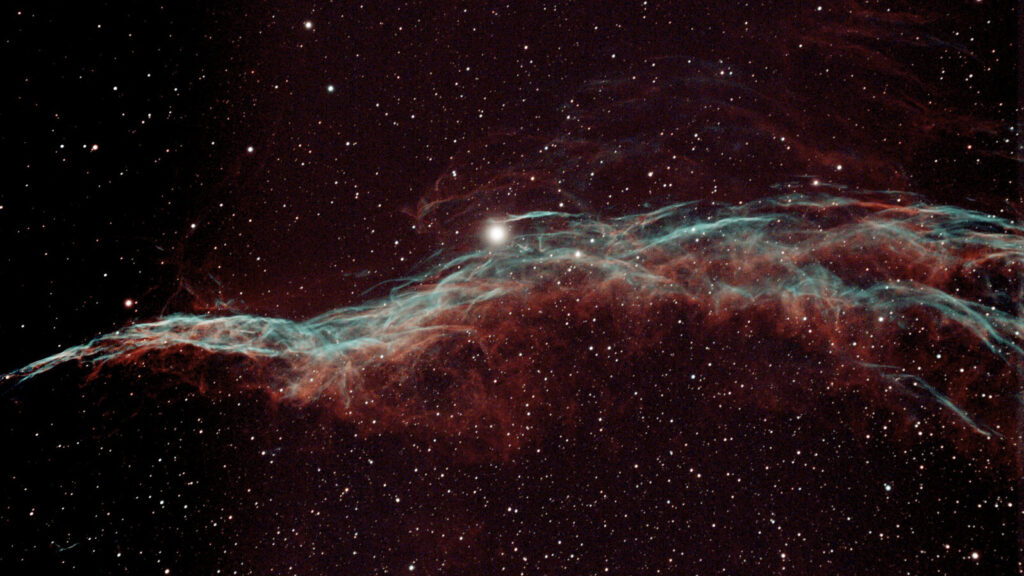
Description:
The Veil Nebula is a cloud of heated and ionized gasand dust in the constellation Cygnus – constituting the visible portions of the Cygnus Loop, a supernova remnant, many portions of which have acquired their own individual names and catalogue identifiers. The source supernova was a star 20 times more massive than the Sun which exploded between 10,000 and 20,000 years ago. At the time of the explosion, the supernova would have appeared brighter than Venus in the sky, and visible in the daytime. The remnants have since expanded to cover an area of the sky roughly 3 degrees in diameter (about 6 times the diameter, and 36 times the area, of the full Moon). It is located about 2400 light-years from earth. The analysis of the emissions from the nebula indicates the presence of oxygen, sulfur, and hydrogen. It is also a strong emitter of radio waves and x-rays.
The nebula has a radius of 65 light-years (diameter of 130 light-years). The thickness of each filament is 1⁄50,000th of the radius, or about 4 billion miles, roughly the distance from Earth to Pluto. Undulations in the surface of the shell lead to multiple filamentary images, which appear to be intertwined. The Veil Nebula is expanding at a velocity of about 1.5 million kilometers per hour.
The Western Veil (also known as Caldwell 34), consisting of NGC 6960 (the “Witch’s Broom”, Lacework Nebula, “Filamentary Nebula”) near the foreground star 52 Cygni.
Image capture:
Image processing:
Comments:
Leave a Reply